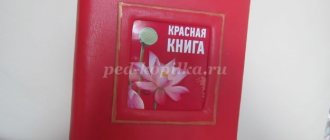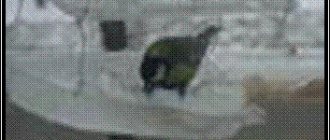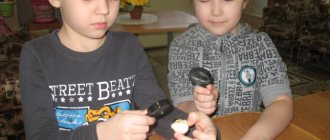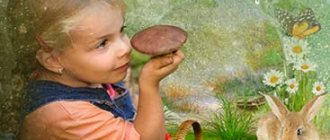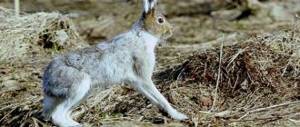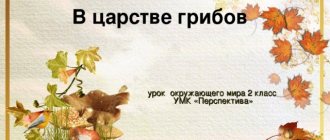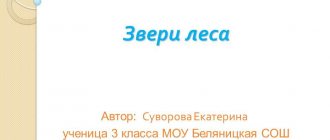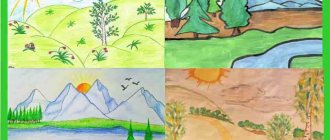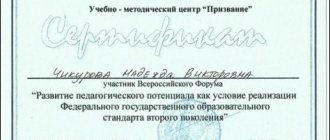Prove that animals need to be protected.
Animals are very necessary for both nature and humans.
They help plants disperse and help them reproduce. Animals provide people with food and clothing. But animals are also very beautiful and communicating with them gives a person pleasure. Without animals, life on the planet would become boring. Therefore they need to be protected.
Read descriptions of animals from the Red Book of Russia. Recognize the animals in the photographs based on the descriptions.
The first photo shows a flamingo, an amazing bird with pink plumage.
In the second picture we see a beauty beetle that lives in forests.
The third photo shows the golden eagle, a powerful bird of prey.
In the bottom row we see a walrus lying on an ice floe and a tiger with a striped skin.
check yourself
What role do animals play in nature and human life?
Animals help plants reproduce and spread. They give a person food, clothing, and aesthetic pleasure.
Why are many species of wild animals becoming rare?
Animals become rare because people deprive them of their habitat, or because they are hunted.
What animals do you know from the Red Book of Russia?
The Red Book of Russia includes such animals as the walrus, polar bear, tiger, leopard, golden eagle, flamingo, beauty beetle and stag beetle.
How should you behave in nature so as not to harm animals?
You can’t destroy birds’ nests, you can’t take baby animals with you, you can’t catch butterflies and other insects, you can’t let a dog go for a walk without a muzzle.
What do people do to protect animals?
To protect animals, people set up nature reserves and national parks, restore animal populations in reserves, and prohibit hunting of various types of animals and in different seasons of the year. Rare animals are included in the Red Book.
Why is it important to protect the animals of the earth?
Biodiversity is essential for a healthy and functional ecosystem and this directly affects human life. If wildlife is removed from its natural habitat, the delicate balance of the ecosystem will be disrupted, leading to disastrous results. For example, if a species becomes extinct, the food chain will be disrupted and all species will be affected. If one animal species disappears, the next one will gradually disappear. For this reason and many others, we must protect the animals of the earth .
Topic: 10 ENDANGERED SPECIES OF ANIMALS YOU'VE PROBABLY NEVER HEARD OF
Homework assignments
In the book “The Giant in the Clearing,” read the story “Don’t catch insects for collections.” Pay attention to which insects are included in the Red Book of Russia.
This story says that children should not catch insects for collections, because such collections do more harm than good. They contain very rare insects that are listed in the Red Book.
Among them:
Stag beetle, Apollo butterfly, many types of bumblebees, Emperor Watch dragonfly.
Analyze your behavior in nature. Do you always treat animals and their environment with care?
I try not to harm or disturb animals when I am in nature. After all, I really love all animals. That's why I don't destroy nests, don't catch insects, and try not to scare wild animals.
With the help of adults, prepare a little book “Take care of animals!” for your younger friends. On the first page, write what the animals would say to the children if they could talk.
What would the animals say to the children, if they could speak:
Dear Guys!
We are animals, our home is the forest, meadows, river and sky. We live with you on the same planet and in the same way we feel pain, breathe air and need a home to raise our kids. Keep this in mind when you go outdoors.
Please do not offend us, do not touch our nests and burrows, do not scare us with loud noise, do not poison us with toxic emissions, do not take our babies away from us.
We just want to live in peace and tranquility, next to you.
And if you treat us well, then we will never offend you. Let's live in peace!
Lesson summary on the world around us with presentation, 3rd grade. Animal protection
Lesson summary on the world around us. 3rd grade.
Topic: Animal protection.
Author: Nugaeva Irina Sergeevna, primary school teacher, Staromostyak secondary school - municipal educational institution, Stary Mostyak village, Starokulatkinsky district, Ulyanovsk region. Description of work. A lesson on the world around us is offered. Author A.A. Pleshakov. Program School of Russia. 3rd grade. This material may be useful for primary school teachers, biology teachers and class teachers. Goal: Organizing the work of students in the position “I am a researcher.” Objectives: - introduce children to the Red Book and the animals included in it;
form ecological rules of human behavior in nature - develop group work skills; - to awaken in children the need to think about concepts such as man’s relationship to nature, ecology, what can I do to save animals? etc. — foster respect for animals and environmental culture. Equipment: laptops, screen, projector, task cards, encyclopedias, atlases, drawings on the theme “My Favorite Animal”, layout of the Red Book, audio recording with bird voices. Lesson progress
1. Org. moment The long-awaited bell is given - the lesson begins. 2. Introduction to a new topic. a) Statement of the problem
- Guys, listen to what happened one day in the forest... One day the boys went into the forest to pick berries.
And suddenly we saw a hedgehog. They decided to take him home. Oh the hedgehogs were little hedgehogs. The mother hedgehog only left her hedgehogs for a minute to get food for them. So the little hedgehogs were left alone without a mother. — Guys, what do you think will happen to hedgehogs without a mother? (They will die.) - Will nature suffer if small hedgehogs die? (Yes, they will suffer) - That's right, guys. Do you think this is a small wound or a big one? (Small) - This is a small wound. But for nature it makes no difference whether the wound is small or large. Nature suffers from wounds, both large and small. - How to solve this problem and correct the boys’ mistake? (You need to let the hedgehog go, she will find her way home on her own) - What can this attitude of people towards nature lead to? (Some animals become rare, and some disappear completely) - Do you think this is a positive or negative attitude of man towards nature? (negative) - So that animals do not disappear, they need to...? - Who guessed what the topic of the lesson is called? b) Formulating the topic and objectives of the lesson
- That's right, guys, the topic of our lesson is: “Animal protection.”
I took the words of R. Rozhdestvensky as the epigraph of our lesson: “If the world perishes tomorrow, it will perish through your fault, indifferent ones.”
We will return to these words later. And during the lesson we will get acquainted with the Red Book, animals that are endangered and formulate environmental rules.
3.Teacher’s story “How beautiful this world is!” (show a slide with pictures of animals) Quiet music plays. - Look at these photographs. How beautiful these creatures of nature are!!! One would only admire them, amazed at how generous nature is with inventions, if not for one circumstance: they are all listed in the Red Book and all of them are in danger of disappearing from the face of the earth. 4.Acquaintance with the Red Book. a) Teacher's story
- People thought that nature would be inexhaustible, no matter how much you take from it, everything will be restored by itself.
And they miscalculated. Some animals have been completely exterminated, and some are endangered. This means that there are few of them, they too can die if they are not protected. For example, the beautiful Amur tiger, which lives in the Far East of the country, is estimated to have about 200 animals left. The International Union for Conservation of Nature has prepared a list of rare mammals and birds. In 1966, this list was compiled into a special book, which was called Red. b) Work in pairs.
- What will the Red Book tell us?
I suggest you guys search for information on the Internet and turn to encyclopedias and atlases.
To do this, first we will repeat the Rules for working in pairs. (Memos are handed out). Memo “How to work in pairs in a lesson” 1. Read the assignment carefully. 2. If you are completing a task with a friend who is approximately equal in strength to you, then try to divide all the work equally. Help each other in case of difficulties, tactfully correct each other's mistakes. 3. If your friend does a better job than you, don’t hesitate to ask him for help, ask him to explain something. But don't abuse it. Don’t be offended by your friend if he corrects this or that mistake. 4. If you see that your friend is doing worse than you, help him, but try to do it in such a way that he himself works with full effort. Watch to see if he makes mistakes; if he does, correct them tactfully and kindly. 5. Remember the main rule: in any collective endeavor you need coordination of actions and a willingness to help your friend. You are responsible for him. He is for you. - So, take the task cards. Task 1 pair:
Why do you think the color red was chosen?
What color are the remaining pages of the International Red Book? Task 2 for pairs:
Tell us what animals are listed on the black, red and yellow pages of the International Red Book?
Task 3 for pairs:
Tell us what animals are listed on the white, gray and green pages of the International Red Book?
Task 4 pairs:
Tell us about the Red Book, which appeared in Russia.
5. Children's performance. - Guys, let's start our journey through the pages of the Red Book. 1 pair: The red color of the Red Book was chosen because the red color is a signal of alarm, impending danger, an SOS signal, this can’t continue! The International Red Book consists of colored pages: black, red, yellow, white, green. The black pages contain lists of those animals that we will never see. On the red pages - especially rare and endangered. The Yellow Page will highlight animals whose numbers are rapidly declining and at risk of being “relocated” to the dangerous Red Pages. It is fashionable to learn about animals that are little known on a white page. The green pages will tell us about the animals that were saved.
2 pair. The black pages contain lists of those who are no longer there, whom we will never see again, who have already become extinct: the sea cow, passenger pigeons and others.
Sea cow. The sea or Steller's cow was discovered in 1741 by the expedition of Vitus Bering and received its name in honor of the expedition doctor, Georg Steller.
Steller's cow lived off the coast of the Commander Islands and had not only low mobility, enormous size and a complete lack of fear of humans, but also delicious meat. The latter was the reason that less than 30 years after its discovery, the sea cow was completely exterminated. Sailors ate its meat, used cow fat for food and lighting, and made boats from the skin. The red pages show us endangered and especially rare animals: bison, red wolf, beaver, leopard, snow leopard, Amur tiger and others. The bison is the only wild species of large bull in Europe that has survived to this day. For most peoples, the bison served not only as an object of hunting. This powerful and beautiful animal personified the forces of nature, had a traditional cult significance, and was worshiped as one of the symbols of the native land. The largest bulls can reach a weight of 850 kg, and sometimes up to 1200 kg! And purely externally, the massiveness of the animal is aggravated by the very massive front part of the body, with high withers and hump, a large head with horns, and also covered with long thick hair. Large bulls have a mane - just right for another lion! Today, bison populations evicted from zoos to nature under special programs live in Poland, Belarus, Lithuania, Ukraine and in the Caucasus in the Caucasus Nature Reserve. The Yellow Pages told us about those animals whose numbers are rapidly decreasing: polar bears, pink flamingos, pink gulls, gazelle and others. Pink flamingo. Large populations of flamingos are found in some African countries and in India. The largest population located in the post-Soviet space is in Kazakhstan. But the number of individuals, for one reason or another, has now significantly decreased. If in the middle of the last century there were from 70 to 100 thousand pink birds living there, now there are no more than 20,000. There are no permanent populations in Russia. But still, he occasionally flies to visit us, inhabiting the Volga delta and Dagestan. We saw him both in the Leningrad region and in the Altai Territory, but he flies there very rarely and in small flocks. Physical exercise. (Relaxation). (An audio recording with the voices of birds is turned on) - Guys, now close your eyes and imagine that we find ourselves in the forest. We walk along the green fluffy grass. The gentle warm sun is shining. The birds sing their beautiful songs. A butterfly flies nearby. A woodpecker knocks its beak on a tree. There is a smell of fragrant strawberries all around. We deeply inhale this smell. We even feel a little dizzy. How beautiful this forest is! We will definitely come back here again. 3 pair: On the white pages we can find out information about animals, of which there have always been few.
They live in small areas. These are polar bear, snow leopard, sika deer, platypus. Polar bear.
A typical inhabitant of the Arctic. In size, the polar bear surpasses not only the representatives of its family, but also the entire order of predators. Males of this class can reach 3 m in length and up to one ton in weight. However, neither the great weight nor the large size, which creates the impression of clumsiness and sluggishness, prevent the polar bear from moving quickly and deftly on land, swimming easily, staying in the water for a long time and even diving. Thanks to the presence of thick, dense wool, which covers not only its body, but also the soles of its feet. The gray pages will tell us about animals and plants that are still little studied. Their habitats are difficult to access or not clearly established. These are the elephant turtle, the Hercules beetle, emperor penguins and others. The emperor penguin is the largest of the penguins.
When the emperor penguin stands hunched over on land, its height is approximately 90 cm, but when it is alert and moving, it is 110-120 cm. The weight of the emperor penguin is 20-45 kg. The dorsal side of the emperor penguin is dark, grayish-blue, and on the head this color turns black. There are rounded yellowish-orange spots near the ears, spreading to the underside of the neck and gradually fading to nothing on the chest. Emperor penguin chicks are covered with long, white or grayish-white down; the top of the head and the vertical strip separating the cheeks from the back of the head are brownish-black. The green pages record animals that have been saved from extinction. Some of these animals are brown bears, beavers, and sables. The sable is a unique animal.
The body of the sable is medium in size. The body length of males ranges from 40 to 60 cm, and their weight is approximately 2 kg. He leads sedentary and nomadic ways of life, which alternate with each other. In the first period, the animal is tied to a certain area, and throughout its life it rarely goes beyond its boundaries. Only natural disasters, forest fires, massive deforestation, and lack of food can force an animal to leave its habitat. 4 pair: Since 1600, about 150 species of animals and birds have become extinct on our planet, more than half of them only in the last 50 years and with few exceptions due to human fault. Nature has been protected in Russia for a long time. Back in the 14th - 16th centuries, a number of royal decrees appeared regulating the production of the main fur-bearing animals - beaver and sable. In modern Russia, the Red Book has been reprinted several times.
The last Red Book of the RSFSR was published in 1983, which is still valid in Russia today. The territory of Russia is now home to 246 species and subspecies of animals included in the Red Data Books of Russia. Of these, 65 species and subspecies of mammals, 108 species and subspecies of birds, 11 species of reptiles, 4 species of amphibians, 9 species of fish, 15 species of mollusks and 34 species of insects. Conclusion. - Guys, what is the Red Book for? - That's right, guys, you need to not only know which animals are included in the Red Book. But also to preserve and protect nature. 6.Working with the textbook. -Guys, look at the illustrations with environmental signs in the textbook and try to formulate environmental rules. - do not leave garbage in nature; - do not break branches, do not tear out bushes, do not damage the bark; -do not take forest animals home; - do not shout in the forest and do not play loud music; -What rules can you propose yourself? - That's right, guys. Those. if we return to the words of R. Rozhdestvensky, then we should not be... (indifferent) - How can you and I help nature? What contribution can we make to nature conservation? - I trust you that you will behave correctly in nature, because I know that you love nature, love animals. Your drawings on the theme “My Favorite Animal” speak about this. 7. Reflection - Guys, let's summarize our lesson. To do this, use the phrases: “I found out...”, “I was surprised...”, “I remembered...”. “I was amazed that...” and express your opinion. 8. Creative homework. — I suggest you choose a homework assignment you like and complete it. 1. Select proverbs about the importance of nature and respect for it. 2. Prepare a report on rare animals of the Ulyanovsk region. 3.Create and draw your own environmental signs. 9.Song performance. -I propose to complete our lesson with the “Song of Nature’s Friends.” (All children come to the board, join hands and perform a song)
Presentation on the topic: Lesson summary on the world around us, 3rd grade. Animal protection
We recommend watching:
Development of an integrated lesson on extracurricular reading - the surrounding world for grades 3-4. Summary of a lesson on the surrounding world, grade 3 “School of Russia”. Environmental safety Poem for children: Snow leopard Extracurricular lesson on ecology in elementary school with a presentation. White-breasted marten
Similar articles:
Open lesson-project on the world around us, grade 3
Lesson summary on the world around us, grade 3
Class hour in 3rd grade on the topic: Medicine Flowers
Extracurricular activity on the surrounding world in 3rd grade
Summary of an integrated lesson in 3rd grade on literary reading and the world around us
